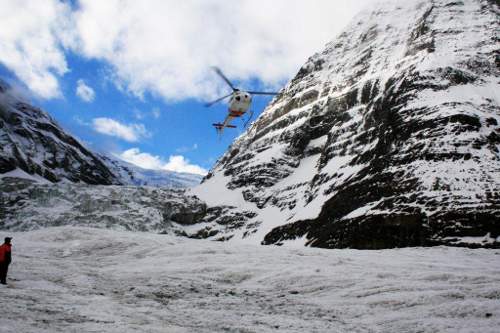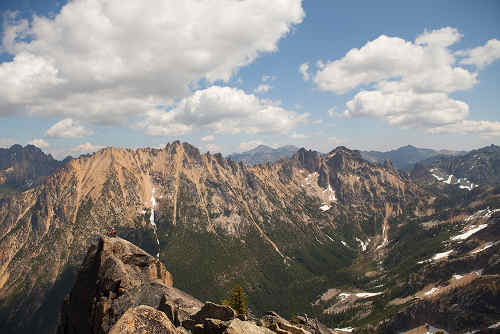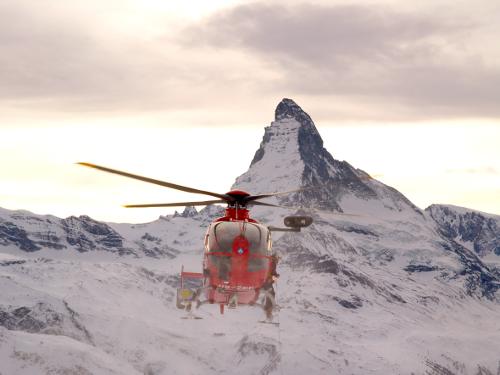
Don’t let your expedition go south. The American Alpine Club offers some survival tips so you don’t have to call in the big guns. (Image: Global Rescue)
Whether you love hiking, climbing, mountain biking, or kayaking, you probably know a lot about outdoor safety.
But if your expedition goes sour, first aid training and compass skills might not be enough to pull you from a life-threatening morass.
Here at the American Alpine Club, we’ve seen a little innovation go a long way, so we put together some of our favorite backcountry tips and tricks:
1. Fire Starters You Didn’t Know You Had.
Cleaning wounds is not a high priority when you’re lost or close to hypothermic. Bust out the first-aid kit anyway! You’ll find a few staples—alcohol swabs and cotton balls—that serve double duty as fire starters in an emergency. For extra spark, coat the cotton in petroleum jelly. Duct tape is also flammable, which demonstrates yet again that it is, without question, the most versatile tool in the universe. Or is it?
2. Fishing Line—The New Duct Tape
Duct tape is good, but fishing line might be even better. Not only is fishing line super lightweight, but it also has dozens of backcountry uses when you’re in trouble. Hungry? Catch your food. Exposed or broken? Tie up a tarp for your shelter, repair clothes and shoes, or stitch up your wounds.
Stranded? Use the line to make a signal kite. Simply construct the frame from sticks, tent poles, or trekking poles. Build the body from a bright shirt or section of space blanket. Then tie it all together and launch it to direct rescue crews to you—or for impromptu fun on a windy day. Fishing line can even function better than tweezers to remove ticks: just tie an overhand knot around the head, get it snug, and pull away from the skin. Top that, duct tape!
3. The Sun: Nature’s Iodine

There’s no cell service out here—that’s part of the appeal. But if you need a rescue, use “digital breadcrumbs” as a last resort to help search-and-rescue teams find your location. (Image: Greg VonDoersten)
For safe drinking water in the backcountry, filters and tablets are best, of course. But there’s another crafty way to do away with dangerous bacteria in your water.
Pack a plastic bottle of soda and drink it the first night of your trip. Save the bottle because the thin layer of polyethylene terephthalate (PET) allows the sun’s ultraviolet radiation to perform a bit of magic. Just fill the bottle most of the way with your questionable water, shake it up, top it off, cap it, and put it in direct sunlight.
In one afternoon the combination of heat and radiation will have killed most, if not all, of the microbes that could do you harm. For the same reason, the top few inches of lake water are the cleanest because of the power of the sun. Remember to choose clean snow over lake ice because bacteria can survive for months in the ice, and use a bandana or shirt to remove large particulates and silt.
4. No Cell Service? No Problem.
It’s no surprise that making a cell phone call requires satellites to know where you are. Use that to your advantage when you’re having an emergency in no-man’s-land. Even with zero cell service, you may be able to give emergency or rescue teams clues to your whereabouts.
If you can’t call 911 or send a text, at least turn on your phone to drop “digital breadcrumbs” that may aid those looking for you. Make sure your emergency contact at home knows about this trick and has your phone number and service provider at the ready.
5. The Back-Up Plan

Helicopters are awesome. But not so friendly on your wallet. Protect your cash with rescue insurance. (Image: Menno Boermans)
Most adventurers have health insurance or accident insurance, but not many have rescue insurance. Whether you’re all about the weekend epic or a long trek overseas, rescue insurance protects you from insane five-digit costs. Even here in the United States, some local rescue groups and some governmental agencies are beginning to charge for rescue services.
Having the right insurance—available from Global Rescue or by joining the American Alpine Club—also creates peace of mind for you and your family and friends. If you have insurance and something does go wrong, you can focus on getting healthy instead of worrying about the rescue bill.
Know other interesting survival tips? Have an epic rescue story? Share them in the comments below—we’d love to hear from you.
About the American Alpine Club
The American Alpine Club is a nonprofit organization that provides benefits, knowledge, inspiration, and conservation for the outdoor community. It's also one of the outdoor and environmental nonprofits that Trailspace supports.
All AAC members are immediately enrolled in $10,000 of rescue benefits. Every human-powered adventure, anywhere in the world, is covered so long as the participant is injured and past the trailhead. Learn more about AAC programs and member benefits at americanalpineclub.org or "like" The American Alpine Club on Facebook to help support its mission.










